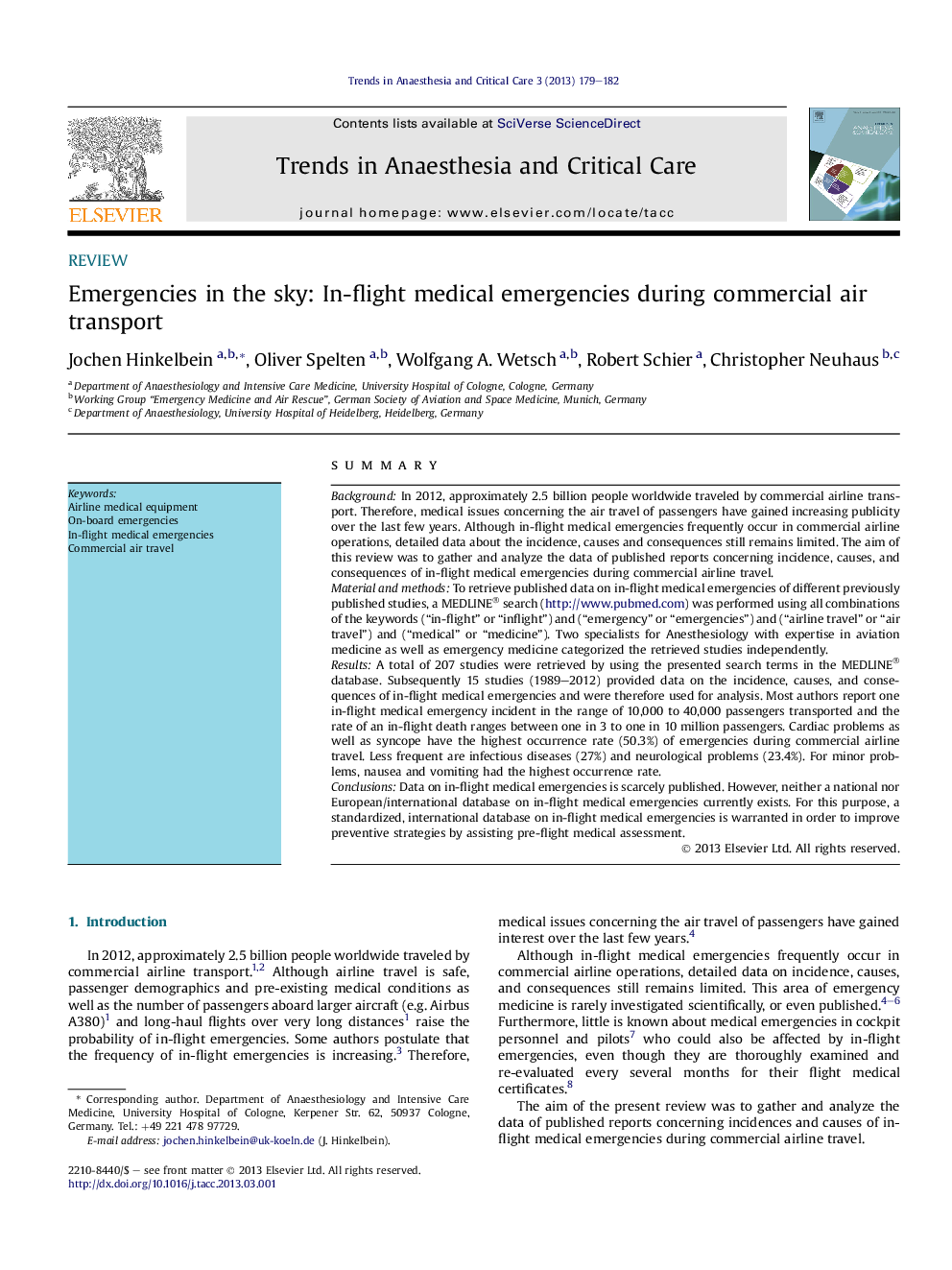| Article ID | Journal | Published Year | Pages | File Type |
|---|---|---|---|---|
| 2772619 | Trends in Anaesthesia and Critical Care | 2013 | 4 Pages |
SummaryBackgroundIn 2012, approximately 2.5 billion people worldwide traveled by commercial airline transport. Therefore, medical issues concerning the air travel of passengers have gained increasing publicity over the last few years. Although in-flight medical emergencies frequently occur in commercial airline operations, detailed data about the incidence, causes and consequences still remains limited. The aim of this review was to gather and analyze the data of published reports concerning incidence, causes, and consequences of in-flight medical emergencies during commercial airline travel.Material and methodsTo retrieve published data on in-flight medical emergencies of different previously published studies, a MEDLINE® search (http://www.pubmed.com) was performed using all combinations of the keywords (“in-flight” or “inflight”) and (“emergency” or “emergencies”) and (“airline travel” or “air travel”) and (“medical” or “medicine”). Two specialists for Anesthesiology with expertise in aviation medicine as well as emergency medicine categorized the retrieved studies independently.ResultsA total of 207 studies were retrieved by using the presented search terms in the MEDLINE® database. Subsequently 15 studies (1989–2012) provided data on the incidence, causes, and consequences of in-flight medical emergencies and were therefore used for analysis. Most authors report one in-flight medical emergency incident in the range of 10,000 to 40,000 passengers transported and the rate of an in-flight death ranges between one in 3 to one in 10 million passengers. Cardiac problems as well as syncope have the highest occurrence rate (50.3%) of emergencies during commercial airline travel. Less frequent are infectious diseases (27%) and neurological problems (23.4%). For minor problems, nausea and vomiting had the highest occurrence rate.ConclusionsData on in-flight medical emergencies is scarcely published. However, neither a national nor European/international database on in-flight medical emergencies currently exists. For this purpose, a standardized, international database on in-flight medical emergencies is warranted in order to improve preventive strategies by assisting pre-flight medical assessment.
